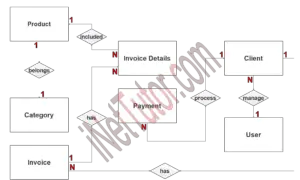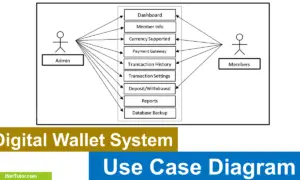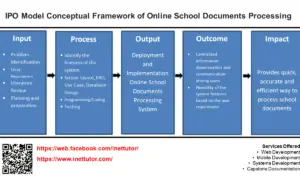Faculty Deliverable System Conceptual Framework
Are you currently working on a capstone project that involves the development of a faculty deliverable system? If so, understanding the conceptual framework of this project is crucial to ensure its success. In this article, we will explore the Faculty Deliverable System Conceptual Framework using the IPO (Input-Process-Output) model. Join us as we explore into the different phases of the framework and how it can aid in the development of a top-performing faculty deliverable system.
About the Project
Table of Contents
The capstone project, “Faculty Deliverable Monitoring System with SMS Notification” is a web-based project that will enable faculty to upload their deliverables such as grades, syllabuses, and learning materials. Faculty members and department heads will be able to interact more easily with one another, as well as keep track of the requirements and files submitted by the faculty members. The said project has also a notification feature via SMS that will remind the faculty about the deadline of requirements.
The Faculty Deliverable System in PHP and MySQL is a valuable tool that provides numerous benefits and advantages to educational institutions. It can help streamline faculty workload management by providing an organized system for tracking and monitoring faculty deliverables such as research papers, lesson plans, and other academic outputs. This system also ensures that faculty members are accountable and meeting their obligations, leading to improved faculty performance and overall institutional productivity. Additionally, the system promotes transparency and communication between faculty members and administrative staff, ultimately leading to better decision-making and more efficient processes.
Objectives of the Study
The general objective of this research study on Faculty Deliverable System in PHP and MySQL is to develop a web-based application that will efficiently manage and track the deliverables of faculty members in an academic institution, ultimately improving the productivity and performance of the faculty members and the institution as a whole.
- To design a system that will serve as a repository of faculty deliverable.
- To develop a system that will ease up the monitoring and approval of faculty deliverable.
- Output of the study will make it easier for faculty members and department heads regarding the status of the deliverable.
- The system is efficient, convenient and hassle-free to use.
What is a Conceptual Framework?
A conceptual framework is a visual or written representation that outlines the structure and key components of a research study or project. It serves as a guide in the development and implementation of the project by identifying its objectives, key concepts, theories, and assumptions.
The IPO (Input-Process-Output) model, on the other hand, is a framework that helps in the design and development of a system. It identifies the inputs, processes, and outputs of the system to ensure that it meets the desired requirements and objectives.
In a capstone project such as the development of a Faculty Deliverable System in PHP and MySQL, a conceptual framework using the IPO model can help in identifying the necessary inputs, such as the data and information needed to create the system. It also helps in outlining the processes involved in the system’s development and the expected outputs, such as the functionalities and features of the system that will benefit the faculty and the institution as a whole. Overall, a conceptual framework using the IPO model can guide the development team in creating an efficient and effective system that meets the needs of its users.
Conceptual Framework Diagram
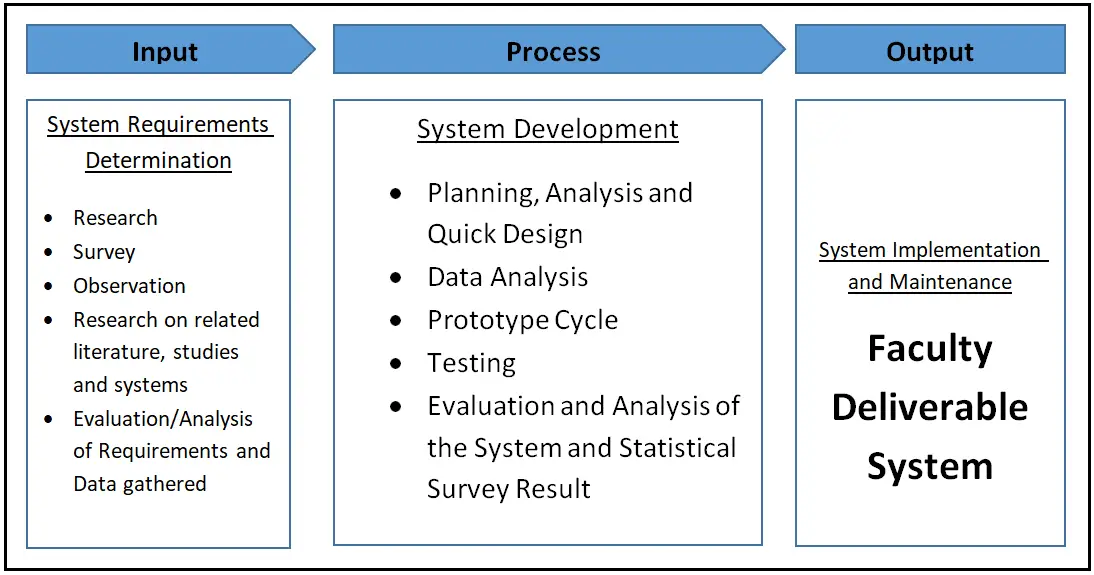
The image above is the conceptual framework of the project entitled Faculty Deliverable System. It is based on IPO model or also known as the input, process and output model.
Input
The project will begin with an evaluation of the current procedure, followed by research, survey, and observation. The researchers must also gather relevant articles and systems to serve as a guide for the project’s progress. Following the completion of this process, the researchers will review and analyze the requirements and data acquired.
In the input phase of the conceptual framework for Faculty Deliverable System in PHP and MySQL, the following have their respective meaning and purpose:
Research: The process of gathering information and knowledge about the topic or problem at hand. This helps in identifying the best practices, potential issues, and available solutions.
Survey: A method of data collection that involves asking questions to a group of individuals or organizations. This is done to gather insights on the needs, preferences, and opinions of the target audience.
Observation: The act of carefully watching and recording events or behaviors in a particular setting. This helps in identifying patterns and trends that can provide insights on the system’s performance and usability.
Research on related literature, studies, and systems: The process of reviewing existing literature, studies, and systems that are relevant to the project. This helps in identifying gaps in knowledge, potential challenges, and available solutions.
Evaluation/Analysis of Requirements and Data gathered: The process of assessing the gathered information to identify the necessary features, functionalities, and requirements of the system. This helps in ensuring that the system can effectively address the needs and goals of its users.
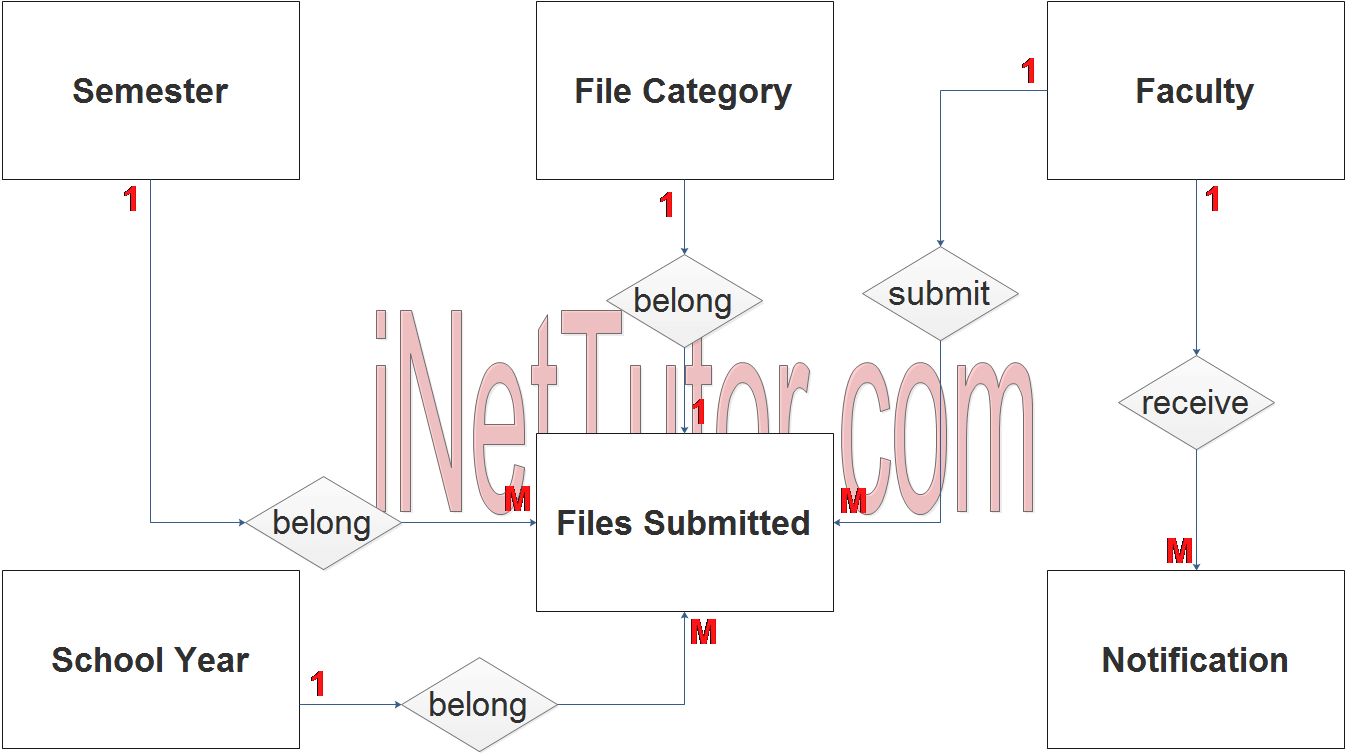
Process
Analysis and Quick Design
During Analysis and Quick Design, the researchers did a personal interview with the respondents and the chosen client where the study was conducted. The respondents were given the chance to suggest how the system will be designed. After conducting the data gathering, the researchers made an initial design for the proposed system.
Data Analysis
The researchers will analyze all the data, user requirements and information. This phase also help the researchers to have an idea on how to create the system and have an idea on how the proposed system would be beneficial to the clients.
System Design
The researchers will start to develop the proposed system. It includes the design; how the system would look like based on user requirements, and the researchers/programmer would like to add personal design to make the system more interactive and user friendly.
Prototype Cycle
This stage will consist of the researchers’ data being compiled, built, demonstrated, and refined. The researchers create a prototype first, based on the planned design and data tables. The prototype will be shown to the client after it has been built. The researchers demonstrate the system’s operation, the flow of how it operates, and the functions of the system’s features. The next stage is refining, in which the researchers will fine-tune the system based on the client’s extra requirements. Changes to the features flow and functionalities will be made based on the needs.
Testing and Evaluation
This will include the feed backing of the proposed system after it will be implemented and had undergone testing by three Experts. It will also inform the researchers and the developer if there are any bugs, suggestion and if the system’s functionality will works well.
This will discuss the implementation of the propose system wherein Three (3) Experts will evaluate the propose system. This will also discuss if the recommended functions and suggestion are met.
What is SDLC?
The SDLC or Software Development Life Cycle is a process used by software developers to design, develop, test, and maintain software systems. Its purpose is to ensure that the software being developed meets the requirements and needs of the end-users, is of high quality, and can be maintained and updated efficiently. The SDLC provides a structured approach to the software development process, from initial planning and analysis to implementation and ongoing maintenance. Following the SDLC can help ensure that the Faculty Deliverable System is developed systematically, with a clear understanding of the requirements and expectations, and with proper testing and documentation to ensure a successful deployment and future updates.
Output
The output phase of the Faculty Deliverable System in PHP and MySQL involves the implementation of the system, including the installation of the software in the live environment. This phase also includes the testing of the system to ensure that it works properly and meets the requirements that were identified in the input phase. The implementation process may involve training for users of the system, such as faculty members and administrators. After the system is live, there will likely be ongoing maintenance and support, including regular updates and upgrades to ensure that the system remains functional and meets the needs of its users. This phase is crucial to ensure that the Faculty Deliverable System is effective and reliable, providing a useful tool for managing faculty deliverables and improving the efficiency of academic processes.
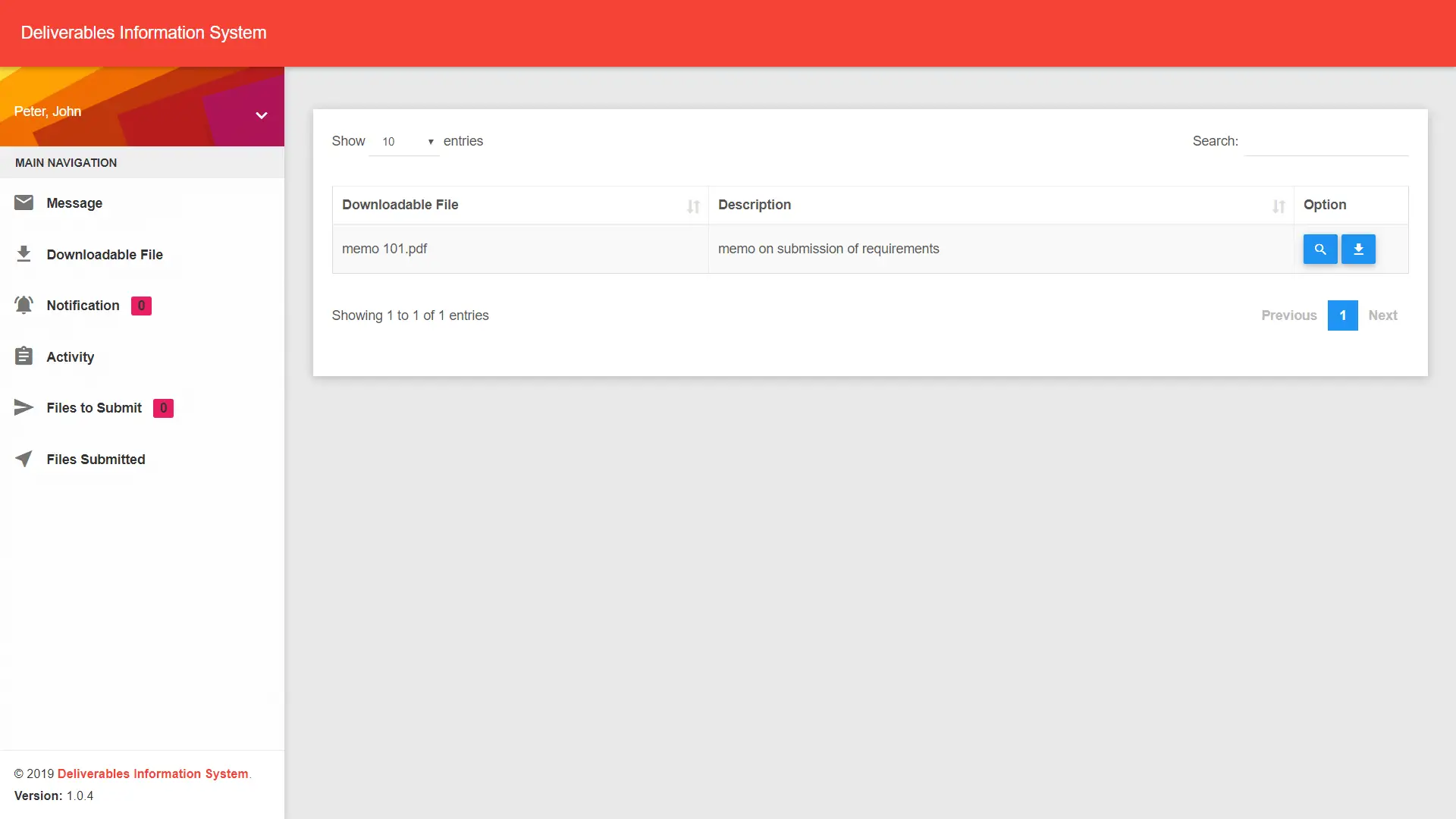
Summary
This research study focuses on the Faculty Deliverable System conceptual framework diagram. The input, process, and output (IPO) model serves as the investigation’s conceptual framework. Research, Survey, Observation, Research on related literature, studies, and systems, and Evaluation/Analysis of Requirements and Data Collected are all part of the input phase. When the input stage is complete, the researchers will proceed to the process stage. The Software Development Life Cycle (SDLC) method is used (SDLC). Planning, Analysis and Quick Design, Data Analysis, Prototype Cycle, Testing and Evaluation, and System and Statistical Survey Result are all part of the SDLC technique. The output phase is the final stage before the produced system is implemented and used. The newly created team will be led by the researchers.
Readers are also interested in:
Top 35 Capstone Project Ideas with SMS
Faculty Deliverables Monitoring System with SMS Notification
You may visit our Facebook page for more information, inquiries, and comments. Please subscribe also to our YouTube Channel to receive free capstone projects resources and computer programming tutorials.
Hire our team to do the project.
